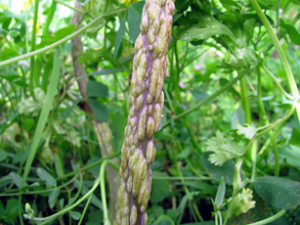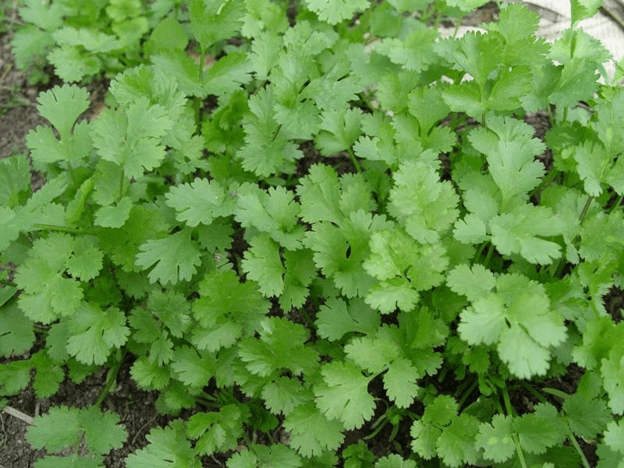Coriander is an annual herb plant used as a spice in kitchen. It is mostly grown for its fruit and green leaves to provide flavor in dishes. Dry seeds of coriander contain essential oils which are used in confectionary, to mask offensive odours in pharmaceutical industry and for flavoring liquors. Green leaves are good source of Vitamin C and are used for making chutney, soups and sauces etc. Coriander also has good medicinal value. Its cultivation is mainly done in October-November month and there are some common diseases which affect the crop yield. So, here are some of the common diseases and their protection method, which farmers can easily use in their fields:
Powdery mildew: This disease harms the crop upto 15-20%. White powder like substance are seen on the upper layer of the leaves, which is later on seen on stem and on grains. The effect of disease is increased if the atmosphere is favorable which will reduce the size of grains.
Treatment:
• The sowing should be done in October month.
• Sowing of resistant varieties should be done, such as Swati, CO 3 and IR 20 etc.
• Spraying of soluble sulphur or kerathane@0.2% should be done after the interval of 10-15 days for 3 times.
• Dusting with sulphur dust@8-10qtl/acre should be done to protect crop from powdery mildew.
• Spraying with Bavistin@0.2% should be done 2-3 times to get rid from disease.
Wilt: Disease is caused by “Fusarium oxysporum coriandri”. It harms the crop 50-100%. From this disease the plants start drying from the top and dried up to the bottom. The disease spread from roots to whole stem.
Treatment:
• Before sowing, treatment of seeds should be done with Trichoderma@4gm/kg of seeds.
• Sowing of resistant varieties should be done such as CS 287, Sindhu, RCR 41 and G0-2 etc.
• Sowing of coriander in same field for more than 3 years should not be done.
• In summer season deep ploughing should be done and keep in mind not to increase the moisture level in the soil.
• The seeds of diseases should not be sown.
Stem gall: When moisture content is more in land, less temperature at night and fog at morning with high temperature during day, then chlamydospores start depositing which will start making knot on the outer side of the stem and then slowly-slowly it spreads on leaves and fruits. This disease is more seen on late sowing crops and harms the 15-25% crop yield.

Treatment:
• Sowing of crop should be done in October month.
• Before sowing seeds are treated with sulphathiazole or sulphazine or hexaconazole or propiconazole @250-1000ppm and by spraying of these fertilizers after 40 and 60 days will help to get rid of this disease.
• Spraying of Carboxin@0.1% and captafol@0.2% should be done four times for the prevention of this disease.
• Resistant varieties such as RCR 41, Karan, RCR 684, Pant Haritma and NRCS should be sown.
If you want to know more about the cultivation of coriander it’s sowing, fertilizer dose, irrigation, harvesting etc. then you can visit Apni kheti website or download Apni Kheti App from Google Play store Link.
For more information about Agriculture and Livestock, download Apni Kheti app – Android, iPhone



